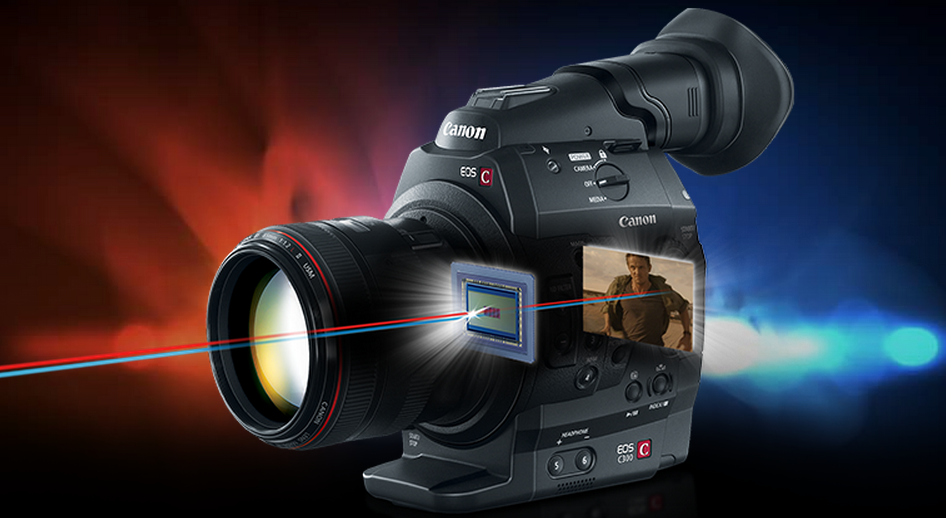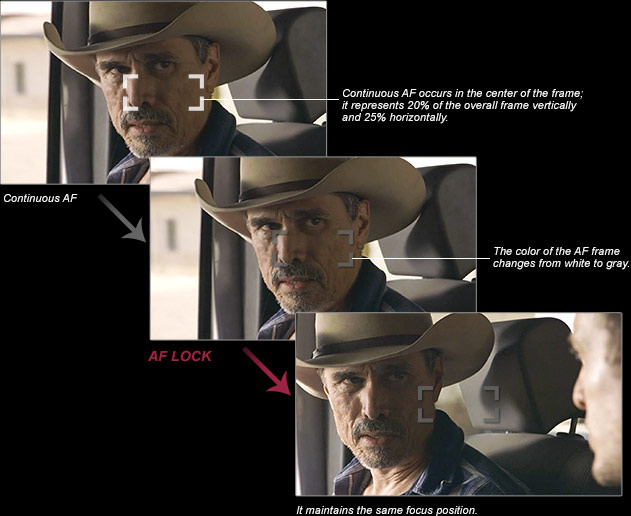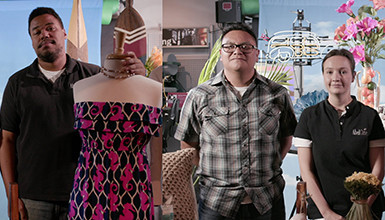
Before demonstrating how DAF can help you hold focus on difficult and previously impossible shots, let's review the core technology and how Canon has uniquely improved on the science of moving image capture.
Cameras have generally used one of two methods to achieve auto focus -- Contrast Detection or Phase Detection. An advantage of Contrast Detection is that it uses the same sensor to detect contrast as is being used to create the image, and because of this, has been the technology used by digital video cameras. Contrast Detection measures the intensity difference between adjacent pixels on the imaging sensor, which increases as the image is more focused. However, one limitation of Contrast Detection is that is has no "predictive" capability; it rocks the lens back and forth while hunting for the sharpest position.
Phase Detection works differently and can predict the position the lens will be in focus and moves the lens accordingly. (See this How Phase Detection Works pdf for more information.) Traditionally, Phase Detection has used a separate sensor from the imaging sensor to do its work. The PD sensor captures light from the lens through a beam splitter and mirror. SLR film and digital cameras have used Phase Detection to achieve focus for still images when the mirror is in place, sharing light with the optical viewfinder. This is what happens when you "press halfway" on an SLR camera. As these cameras evolved into digital video cameras, Phase Detection wasn't possible during movie mode because the beam splitter and mirror were not in place in this mode.
Canon has "changed everything" by combining the method of Phase Detection into the actual image sensor. They do this by separating each pixel into two photodiodes, instead of one, covered by a single micro lens. As a result, two parallax images are captured, and signals from these two images are used to carry out phase-difference detection in the same way that the separate dedicated Phase Detection sensor did previously. Each "dual pixel," therefore, performs two functions -- phase detection and image creation -- without using beam splitters or mirrors, so that phase detection can happen while in movie mode.
To achieve this breakthrough, Canon could not simply divide the photodiode in half, because they also needed to maintain image quality. The characteristics of a pixel for imaging are not always the same as the characteristics of a pixel for Phase Detection AF. The optics design had to balance these two tasks in one pixel. The processing of both imaging and Phase Detection required the development of new integrated circuits to handle twice the amount of data. A number of departments and many skill sets within Canon were required to achieve this goal. It's interesting, and a testament to the strength of Canon, that they were able to bring together all this still camera technology and incorporate it into a digital cinema camera.
The other half of the equation, of course, is Canon optics. An important goal of this project was to have Dual Pixel AF support both new and older EF lenses. Dedicated testing of all lenses was required to assure that the simulation matched reality. Canon engineers spent more than six months testing and refining the algorithm to ensure compatibility with more than 100 different Canon EF auto focus lenses.
When a C300 is modified, the DAF center function area represents 20% of the image vertically and 25% of the image horizontally. ![]() One powerful feature that works in conjunction with DAF is AF Lock, which allows you to hold the focus during re-framing or when occlusions mask the main subject. A skilled operator can "ride the focus" and greatly enhance what a single operator can handle when following complex action.
One powerful feature that works in conjunction with DAF is AF Lock, which allows you to hold the focus during re-framing or when occlusions mask the main subject. A skilled operator can "ride the focus" and greatly enhance what a single operator can handle when following complex action.
 Below are some video examples of Dual Pixel AF used in different situations. These were shot with long focal length lenses and wide-open apertures to explore the boundaries of the auto focus system.
Below are some video examples of Dual Pixel AF used in different situations. These were shot with long focal length lenses and wide-open apertures to explore the boundaries of the auto focus system.
Given that the center of the frame determines focus, one obvious reaction to shooting with DAF is how framing and focus are linked. It will be interesting to see if Canon introduces the ability to "move the box" -- to change the area within the frame for focus -- in future digital cinema cameras, as they have done with the EOS 70D. In the meantime, the C300 upgrade is a welcome and useful enhancement.
















